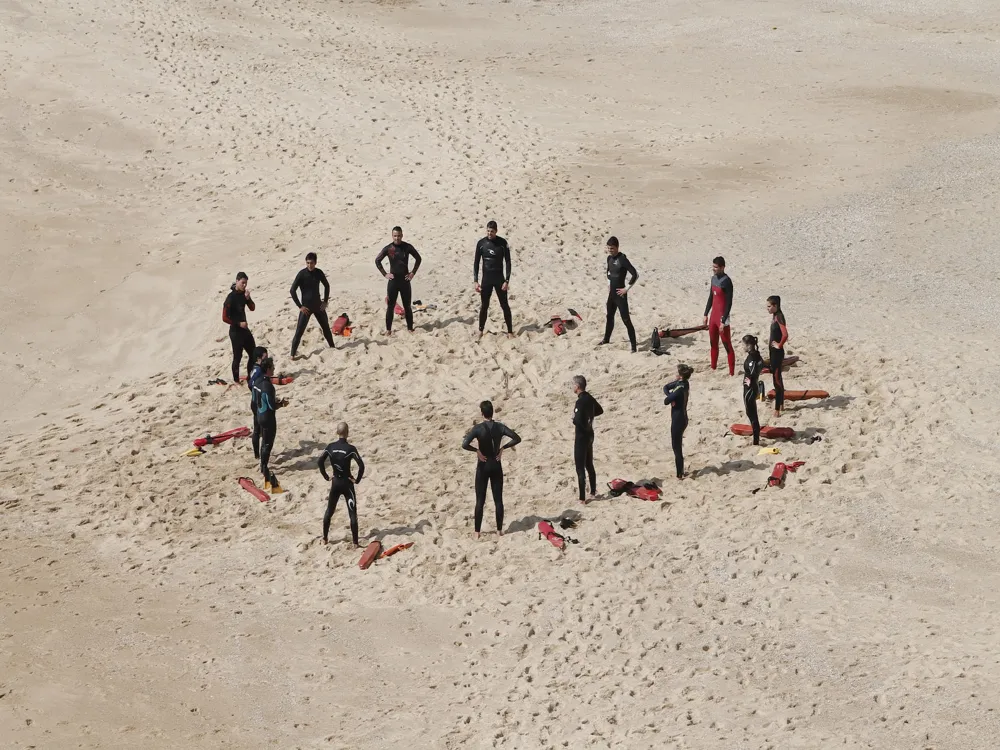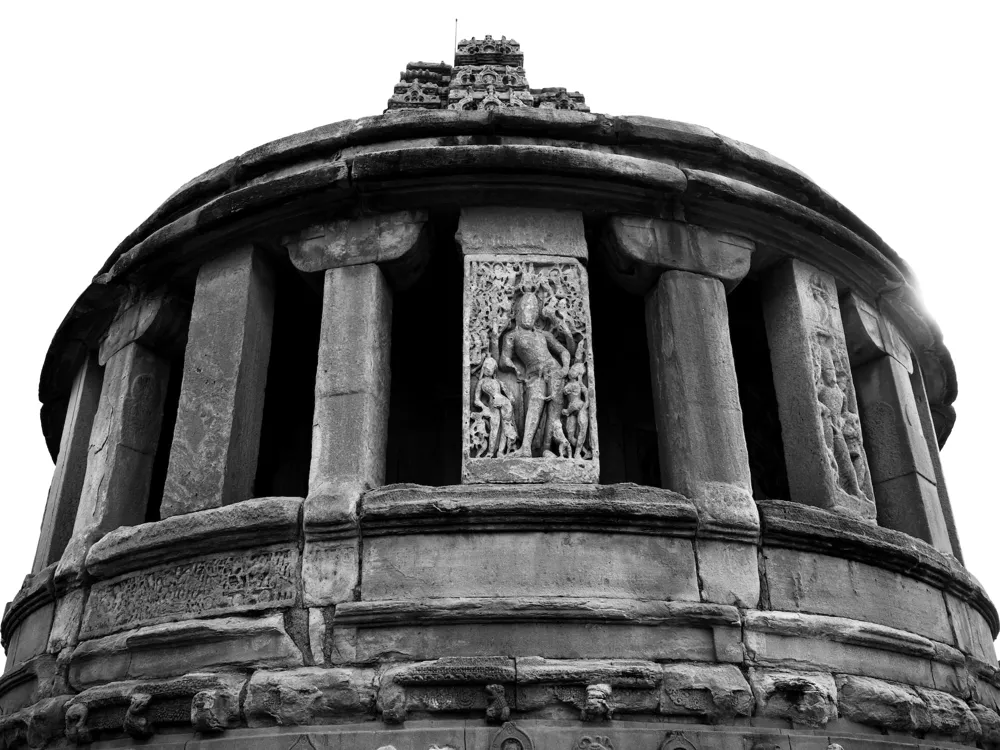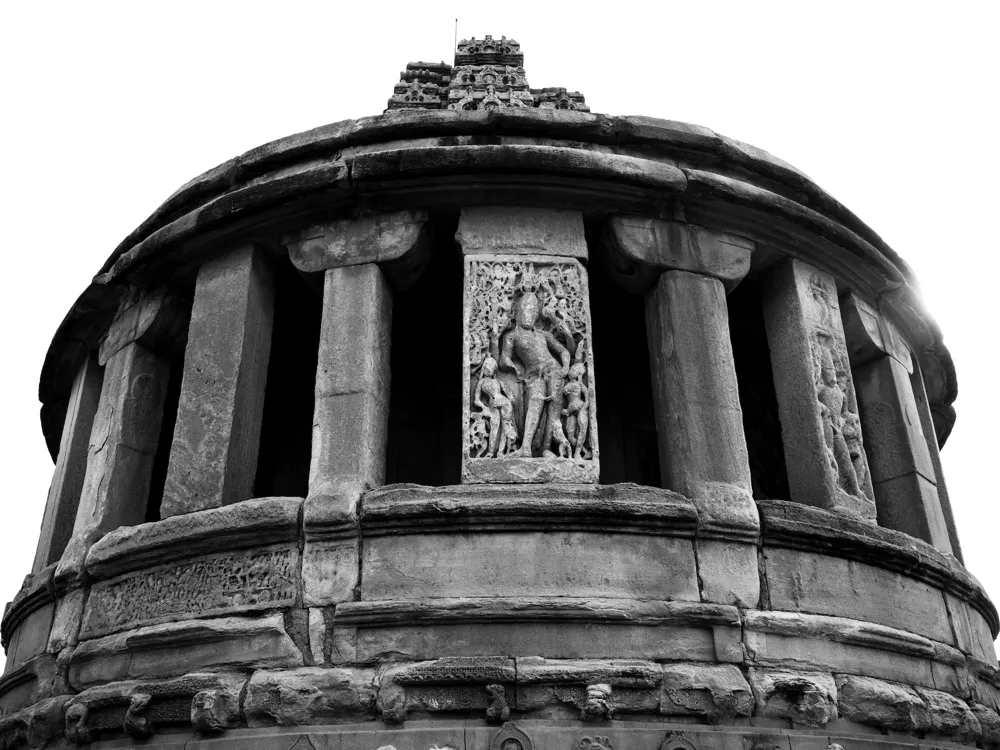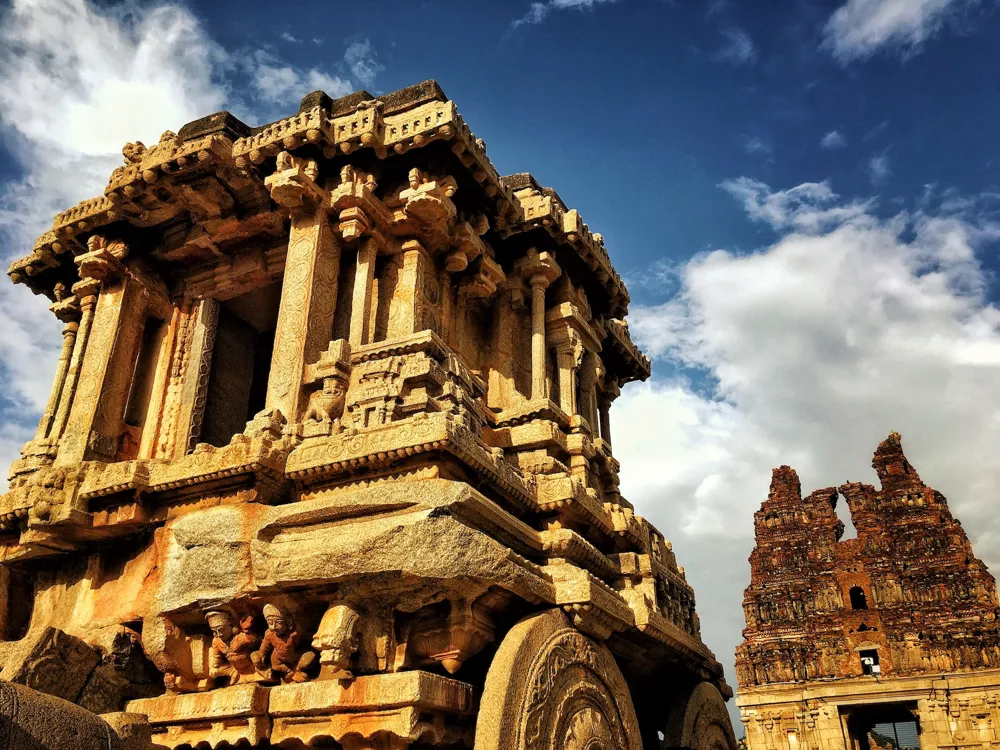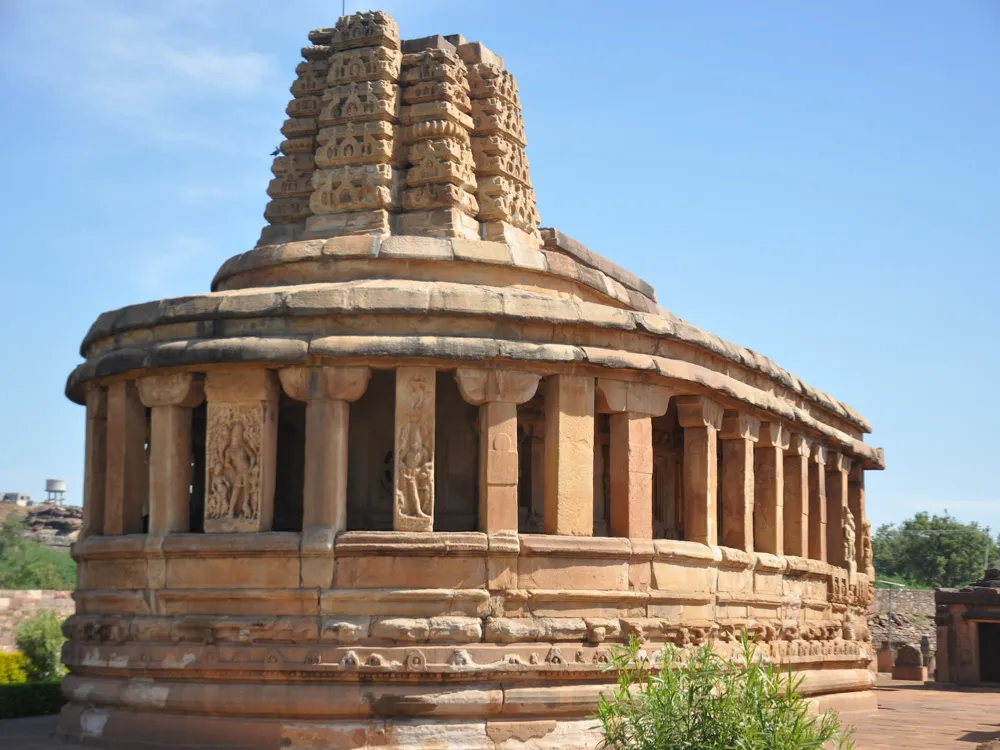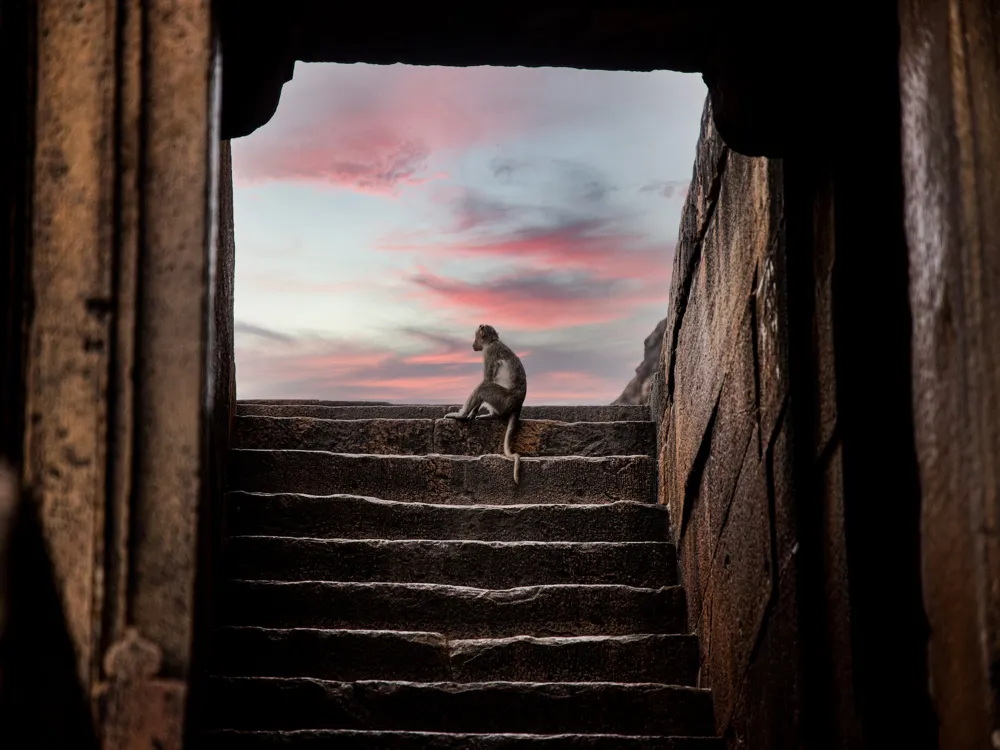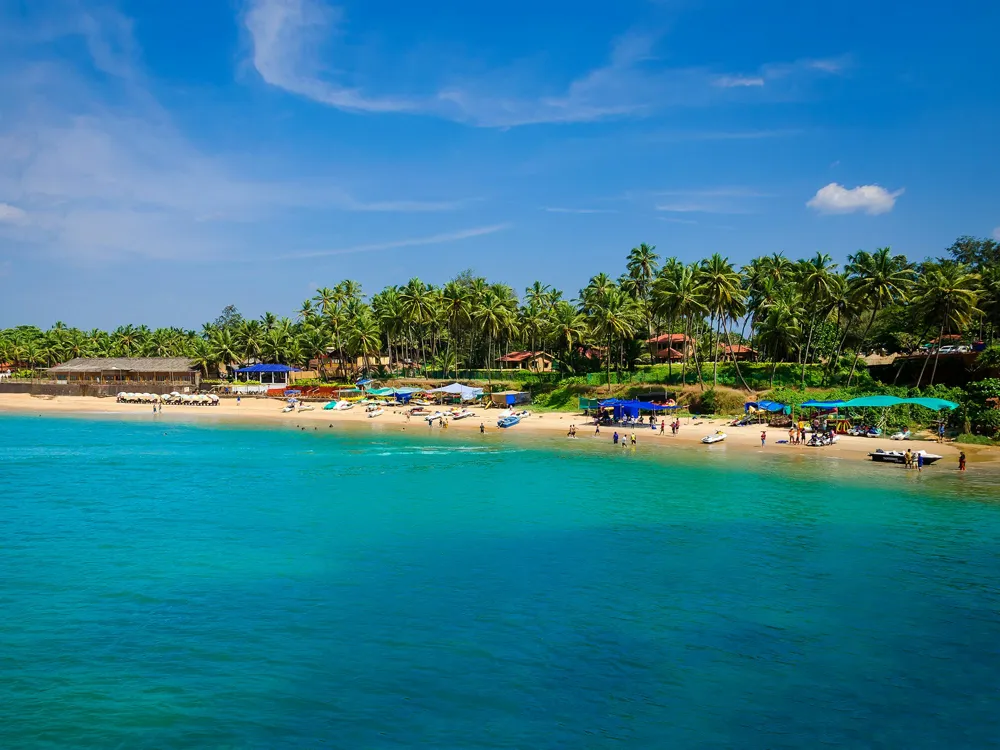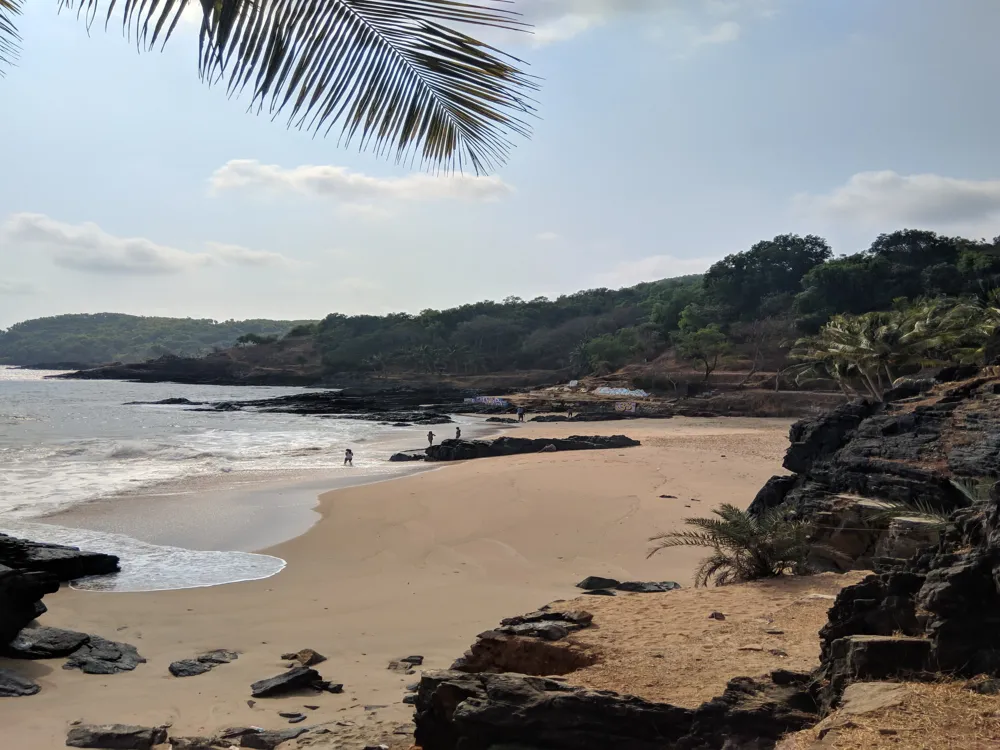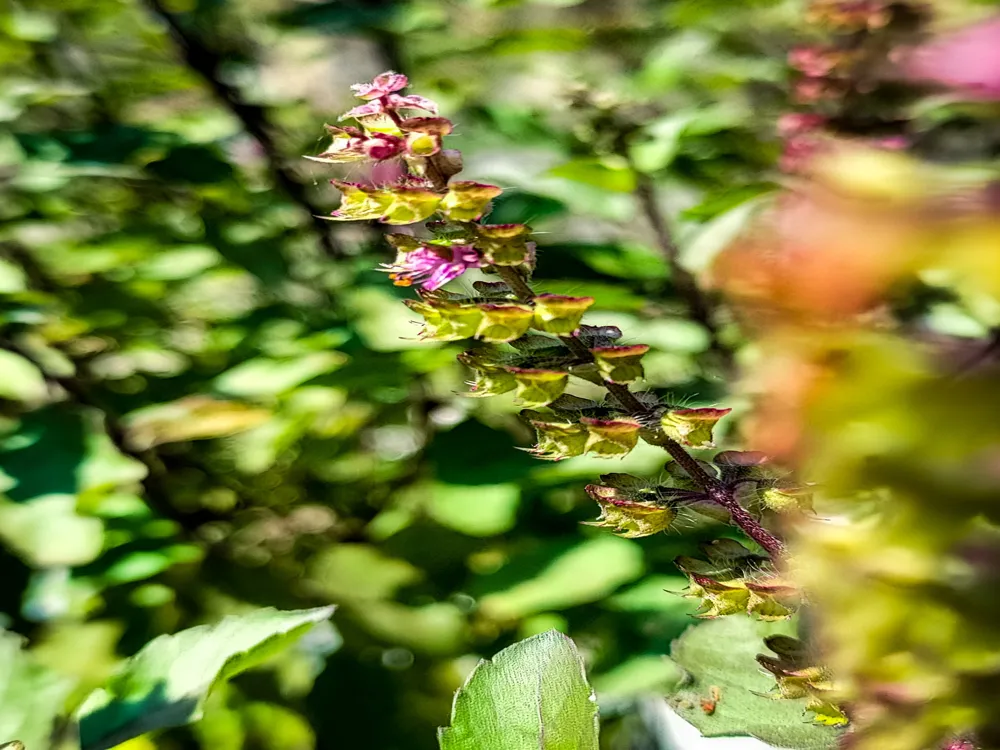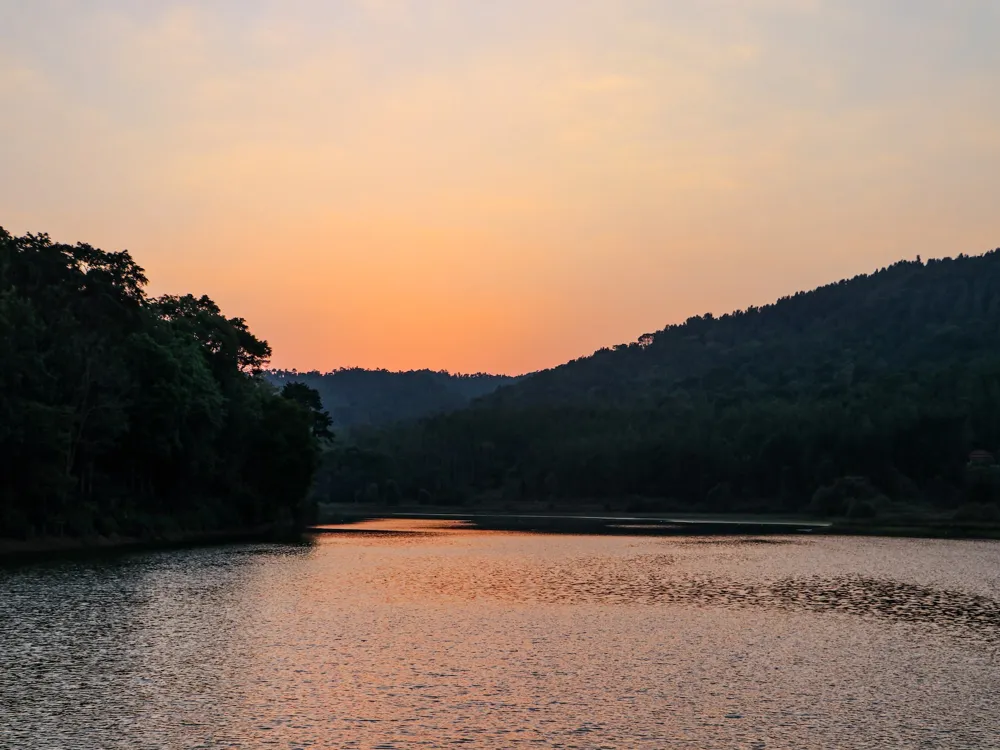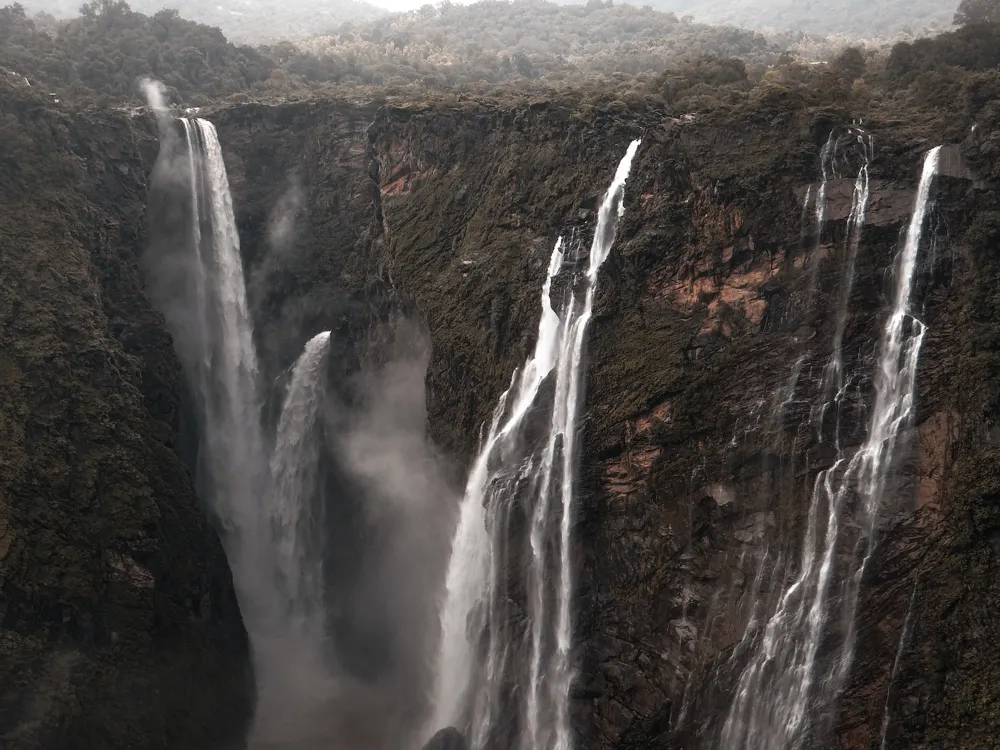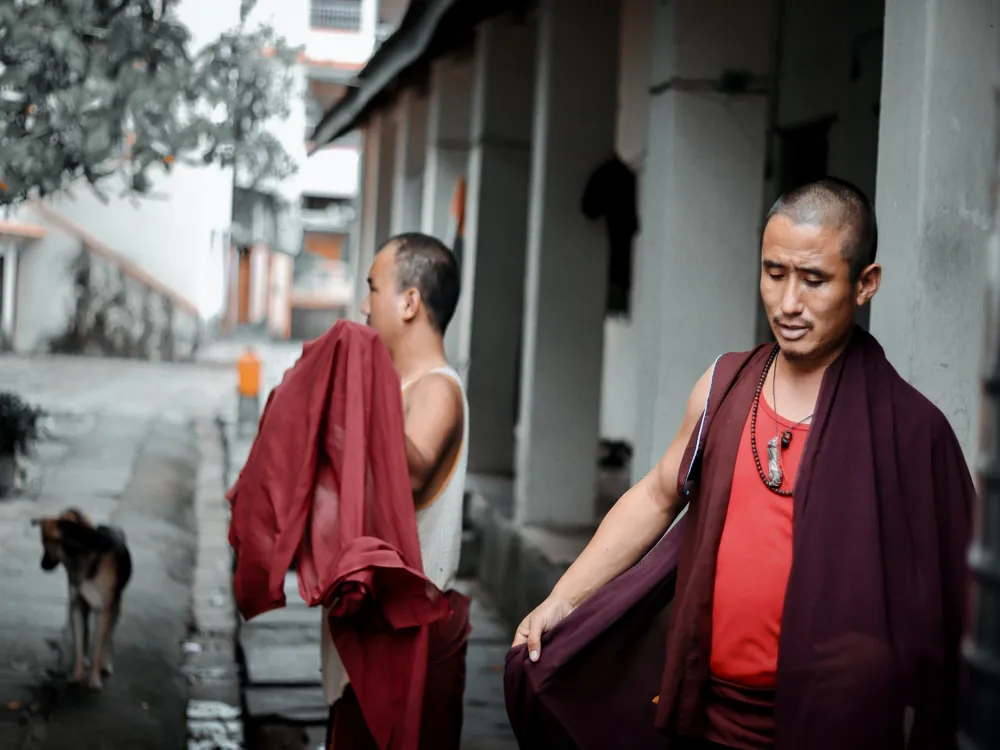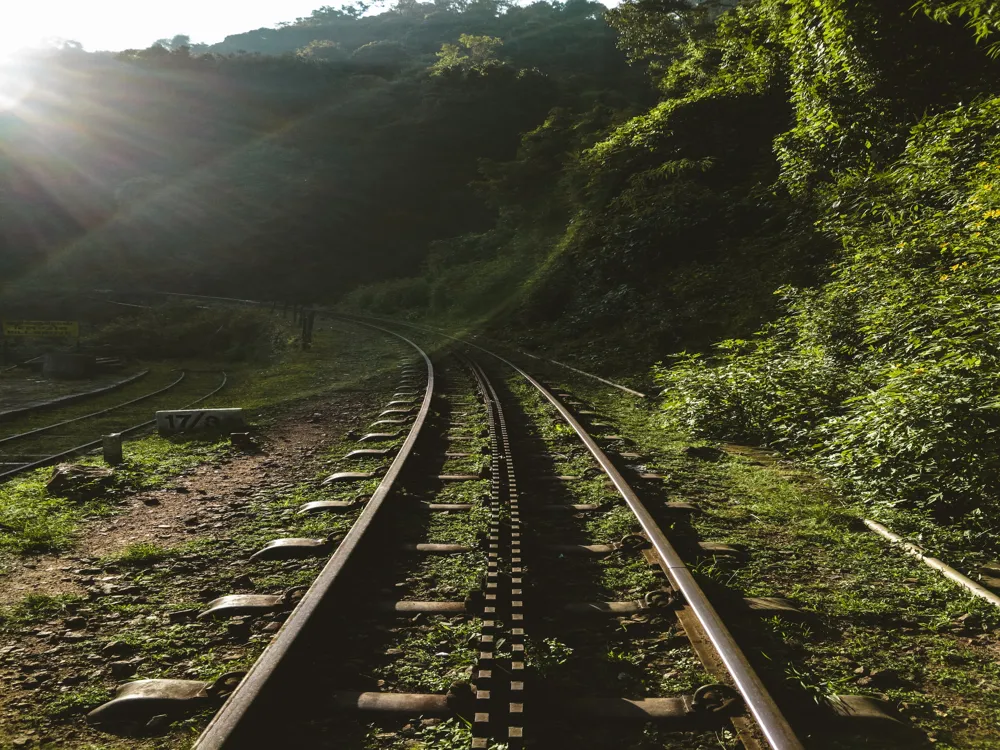The Triyambakeshvara group of temples, nestled in the quaint village of Aihole in Karnataka, India, is a magnificent ensemble of ancient Indian architecture and spirituality. Dating back to the 6th century, these temples are part of the Aihole temple complex, which is often referred to as the 'Cradle of Hindu Rock Architecture'. The Triyambakeshvara temples stand as a testament to the ingenuity and craftsmanship of the Chalukyan architects, who played a pivotal role in the development of temple architecture in South India. Exploring these temples offers a journey through history and mythology, with each structure narrating a story from Hindu scriptures. The temples are dedicated to Lord Shiva, known as Triyambakeshvara, and showcase a blend of Shaivite and Vaishnavite deities, reflecting the syncretic nature of ancient Indian religious practices. The complex's intricate carvings, stone sculptures, and iconic architecture provide a deep insight into the artistic and cultural heritage of the Chalukya period. Spread across a serene landscape, the Triyambakeshvara group of temples captivates visitors with its peaceful ambiance and architectural grandeur. This sacred site not only attracts devotees and pilgrims but also historians, architects, and travelers from across the globe, eager to witness the splendor of early Indian temple architecture and to immerse themselves in the spiritual aura of this ancient holy ground. The architecture of the Triyambakeshvara group of temples is a brilliant display of Chalukyan style, characterized by its unique blend of North Indian (Nagara) and South Indian (Dravidian) architectural elements. The temples are renowned for their distinctive features, such as the tiered, pyramid-like superstructures, intricately carved pillars, and finely sculpted walls depicting scenes from Hindu mythology. One of the most striking features of these temples is the 'vimana' or tower above the sanctum sanctorum, which exhibits a harmonious fusion of different architectural styles. The vimanas are adorned with elaborate carvings of gods, goddesses, and mythological creatures, each telling a tale from the ancient scriptures. The temple walls are festooned with a myriad of sculptures and bas-reliefs that illustrate episodes from the Ramayana, Mahabharata, and Puranas, along with depictions of everyday life in the Chalukya period. The interior of the temples is equally impressive, with ornate pillars supporting the roof and creating a majestic ambiance. The main sanctum, housing the deity, is a place of profound tranquility and spiritual energy. The temple complex also features mandapas (pavilions), halls, and courtyards, each contributing to the overall aesthetic and spiritual experience of the site. The use of local sandstone in the construction of the Triyambakeshvara temples allowed the craftsmen to carve intricate designs with precision, resulting in some of the finest examples of stone art in Indian history. The fusion of architectural styles, the mastery in stone carving, and the attention to detail in every aspect of construction make the Triyambakeshvara group of temples a masterpiece of ancient Indian architecture. Before visiting the Triyambakeshvara temples, it's advisable to research the temple timings, festival dates, and any special events. This will help you plan your visit accordingly and ensure a fulfilling experience. Keep in mind that the temples might be crowded during religious festivals and weekends. As a sign of respect for the cultural and religious significance of the site, visitors are encouraged to dress modestly. Traditional Indian attire or conservative western clothing is recommended. It's also advisable to remove your shoes before entering the temple premises. While photography is generally allowed in the temple complex, there may be restrictions in certain areas, especially inside the sanctum sanctorum. Always look for signage regarding photography or ask the temple authorities for permission before taking photos. Consider hiring a local guide who can provide detailed insights into the history, architecture, and mythology associated with the temples. This will enrich your understanding and appreciation of the site. As a sacred site, it's important to maintain decorum and respect the religious practices and sentiments of the devotees. Avoid loud conversations and disruptive behavior while exploring the temple complex. The Triyambakeshvara group of temples in Aihole is accessible by various modes of transportation. The nearest major city is Bagalkot, which is well-connected by road and rail. From Bagalkot, you can hire a taxi or take a local bus to reach Aihole. The journey offers a picturesque view of the Karnataka countryside and is an experience in itself. For those traveling by air, the nearest airport is in Belgaum, from where you can rent a car or take a bus to Aihole. The road network in Karnataka is well-maintained, making the drive comfortable and enjoyable. Once in Aihole, the temples are easily navigable on foot, allowing visitors to fully immerse themselves in the ancient ambiance of this historic site. Read More:Overview of Triyambakeshvara Group of Temples in Aihole, Karnataka
Architecture of Triyambakeshvara Group of Temples
Tips When Visiting Triyambakeshvara Group of Temples
Plan Your Visit
Dress Appropriately
Photography Guidelines
Hire a Guide
Be Mindful and Respectful
How To Reach Triyambakeshvara Group of Temples
Triyambakeshvara group of temples
Aihole
Karnataka
NaN onwards
View aihole Packages
Aihole Travel Packages
View All Packages For Aihole
Top Hotel Collections for Aihole

Private Pool

Luxury Hotels

5-Star Hotels

Pet Friendly
Top Hotels Near Aihole
Other Top Ranking Places In Aihole
View All Places To Visit In aihole
Faq on Aihole
What is the significance of the Triyambakeshvara group of temples in Aihole?
The Triyambakeshvara group of temples in Aihole holds significant historical and architectural importance. These temples showcase the early experimentation with temple architecture in India during the Chalukya period.
How many temples are there in the Triyambakeshvara group at Aihole?
The Triyambakeshvara group comprises around 30 temples, each exhibiting unique architectural features and design elements.
When were the temples in the Triyambakeshvara group built?
The temples in the Triyambakeshvara group were constructed during the 6th to 8th centuries CE, primarily under the patronage of the Chalukya dynasty.
What architectural styles are present in the Triyambakeshvara group of temples?
The temples in the Triyambakeshvara group exhibit a mix of architectural styles, including Dravidian, Nagara, and Vesara, reflecting the cultural influences prevalent during that era.
Are the temples in the Triyambakeshvara group dedicated to a particular deity?
While the central temple, Triyambakeshvara, is dedicated to Lord Shiva, other temples within the group are dedicated to various Hindu deities, such as Vishnu, Surya, and Ganesha.
View aihole Packages
Aihole Travel Packages
View All Packages For Aihole
Top Hotel Collections for Aihole

Private Pool

Luxury Hotels

5-Star Hotels

Pet Friendly
Top Hotels Near Aihole
Other Top Ranking Places In Aihole
Faq on Aihole
What is the significance of the Triyambakeshvara group of temples in Aihole?
The Triyambakeshvara group of temples in Aihole holds significant historical and architectural importance. These temples showcase the early experimentation with temple architecture in India during the Chalukya period.
How many temples are there in the Triyambakeshvara group at Aihole?
The Triyambakeshvara group comprises around 30 temples, each exhibiting unique architectural features and design elements.
When were the temples in the Triyambakeshvara group built?
The temples in the Triyambakeshvara group were constructed during the 6th to 8th centuries CE, primarily under the patronage of the Chalukya dynasty.
What architectural styles are present in the Triyambakeshvara group of temples?
The temples in the Triyambakeshvara group exhibit a mix of architectural styles, including Dravidian, Nagara, and Vesara, reflecting the cultural influences prevalent during that era.
Are the temples in the Triyambakeshvara group dedicated to a particular deity?
While the central temple, Triyambakeshvara, is dedicated to Lord Shiva, other temples within the group are dedicated to various Hindu deities, such as Vishnu, Surya, and Ganesha.







